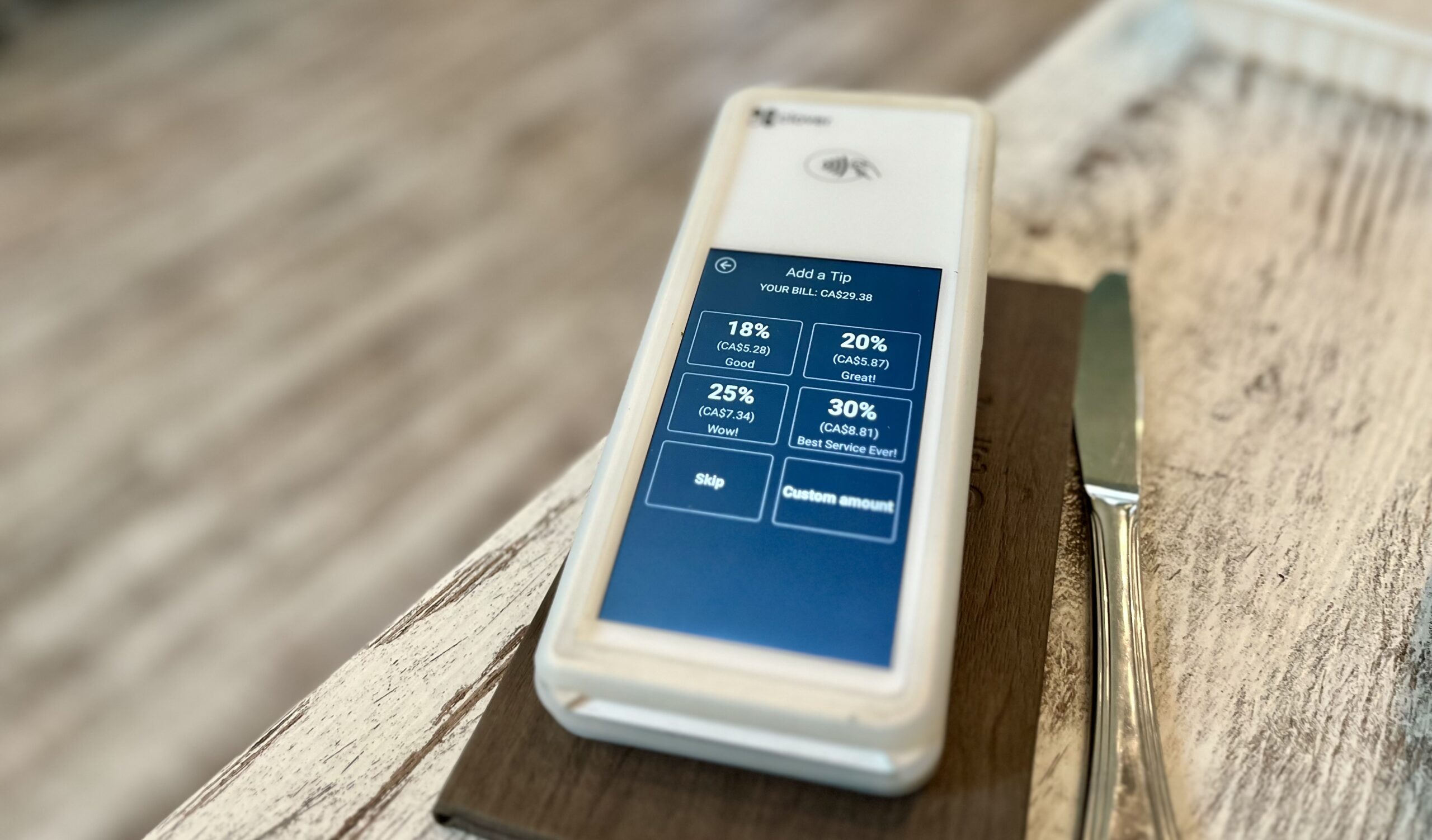I just had a really nice lunch at a local bistro. The service was excellent, the food was fantastic, and it was a sunny day on the patio. When the bill came, everything was primed for a top-tier tip, or so I thought.
In the era of modern technology, automated tipping practices have become an increasingly prominent feature at restaurants. Point of Sale (POS) systems now commonly suggest tip percentages of 18%, 20%, 25%, or even as high as 30%, with these options labeled as Good, Great!, Wow!, and Best Service Ever!, respectively. This digital nudge is designed to make tipping easy and straightforward, but it can also create unexpected dilemmas for customers and unintended consequences for businesses.
Traditionally, a tip was viewed as a means of expressing gratitude for excellent service. An 18 to 20% tip was considered generous, reflecting customer satisfaction and appreciation. However, the escalating tip suggestions embedded in many modern POS systems are shifting this perception. Now, choosing the least suggested option can make customers feel like they’re undervaluing the service they’ve received, leading to a negative experience.
Business owners and managers should be aware of this, as the negative sentiment this can create could potentially outweigh the added revenue from higher tip percentages. The business world is increasingly competitive, and an excellent customer experience is often what distinguishes successful companies. Default tipping settings that trigger discomfort or guilt among customers might harm a business’s reputation and customer relationships in the long run.
It’s also a hidden cost, that’s never advertised, like a tax. And it can be very taxing when that surprise surcharge is suddenly a quarter or a third of your entire bill.
Furthermore, these automated tipping presets can seem presumptuous, especially when there is no option to leave No Tip. The expectation of a tip, regardless of the service quality, diminishes the original intent of tipping: to reward exceptional service. It is a practice that might erode the goodwill that has been carefully built throughout the customer’s dining experience. In some cases, the suggestion/expectation of a higher tip could have a counterproductive effect, leading to a diminished tip or no tip at all.
In this digital age, we’re increasingly presented with fewer options that are of decreasing value to us as consumers. We’re being channeled through click-funnels and checkout flows in ways that benefit the business and the payment processors more than the customer.
POS system providers, who often take a percentage of each transaction, naturally benefit from higher tipping rates. While this business model is understandable, it’s essential for restaurant and retail business owners not to lose sight of their customers’ perspectives. The choice of tipping should ideally remain a discretionary decision based on the customer’s judgment of service quality rather than being influenced by default settings that may seem manipulative.
To overcome these challenges, restaurant owners should take the time to customize the default settings on their POS systems. Offer a wider range of tipping options, including a lower starting percentage, and start with the option to leave no tip. Another is to label the tipping options in a less suggestive way, allowing customers to decide what they consider ‘good’ or ‘great’ service.
Additionally, businesses can explore alternatives to traditional tipping models. For example, some establishments have moved to a service charge included model, where a set percentage is added to the bill upfront, and any additional gratuity is left entirely to the customer’s discretion.
In conclusion, the advent of technology in the restaurant and retail industry, particularly the use of POS systems, offers tremendous benefits for streamlining operations. However, default settings – particularly around tipping practices – should be carefully considered and customized to ensure they align with the business’s customer experience objectives. The tipping process should leave customers feeling good about their decision, whether they choose to tip or not, fostering a positive environment that encourages them to return.
If you’re looking to upgrade or optimize your POS system or eCommerce for the best customer experience, online and offline, get in touch with foxpress for an in-person app evaluation with personalized recommendations and suggestions.



Leave A Comment